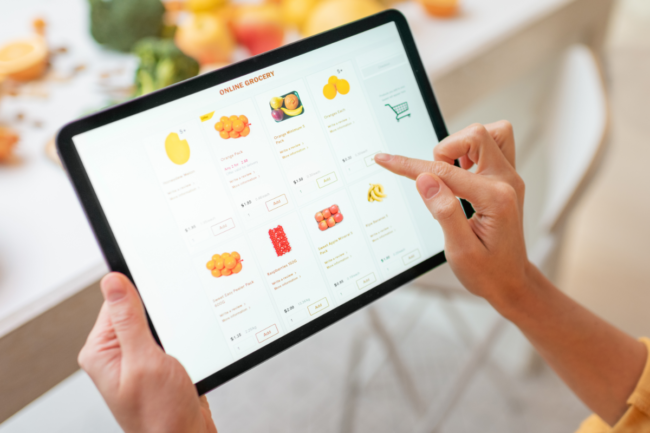BARRINGTON, ILL. — Long-term, established online grocery customers collectively generated more than 3.5 times the revenue for conventional grocers than new customers did during the final 4-week period examined in the Brick Meets Click eGrocery Performance Benchmarking 2021 Wave.
“Grocers need to build more meaningful engagement with their online customers,” said David Bishop, partner in Brick Meets Click. “The market has contracted as expected, but the fact that nearly three-quarters of the customers that shopped online last year have lapsed and nearly two-thirds of the customers today are considered new to the grocer’s service simply underscores that those attracted to shopping this way are still in search of a service they deem acceptable compared to the alternatives.”
The 2021 eGrocery benchmarking wave, sponsored by Cardlytics, Mercatus, and Hussmann, resumed the Brick Meets Click initiative started in 2016 but paused in 2020 due to the pandemic. The benchmarks are based on online transactional data linked to non-personal identified households across nearly 950 stores from 45 U.S. banners. The study is the largest independently conducted online grocery benchmarking initiative completed to date.
The second of the three-part benchmarking report releases this week and focuses on customer metrics. Here are several key insights from the analysis of three corresponding four-week periods in 2020 and 2021.
Longer relationships with customers pay substantial dividends. The more established customers, those who have shopped online with a grocer for over 60 weeks, spent 2.4 times more than new customers who started shopping that same grocer within the past 4 weeks.
Relationship dividends are generated by increased order frequency and spending per order. Comparing the two customer cohorts quantifies that the more established customers’ order frequency is 1.9 times higher than for new customers, and their average order values are 1.3 times greater.
Offering customers choice dramatically enlarges the size of the addressable market. Most customers have strong preferences when receiving online orders from conventional grocers. In fact, when given the option, fewer than 5% used both Pickup and Delivery services from the same grocery banner during the entire 12-week period in 2021. So, if a grocer only offers one receiving method, it could be sending the 54% of shoppers who prefer Delivery and 42% who prefer Pickup to a rival.
Attracting new customers is important but nurturing existing ones is essential. During the final period (four weeks ending September 28, 2021), 34% of online customers had used the grocer’s service for 60 weeks or longer and accounted for 46% of overall online sales, while 23% of customers placed their first order with the grocer and accounted for just 13% of sales. Collectively, the long-term established customers generated more than 3.5 times the revenue than new customers.
“Consumers’ brand and channel preference has been more difficult than ever to predict as a result of the pandemic,” said Mike Novosel, Head of Grocery at Cardlytics. “We focus on helping brands understand whole wallet behavior through our access to $3.5 trillion of annual consumer spend data, and work with them to identify who is not as loyal as suspected, or most inclined to engage with them digitally, then reach them through their bank, where spending is top of mind, to incent behavioral change.”

